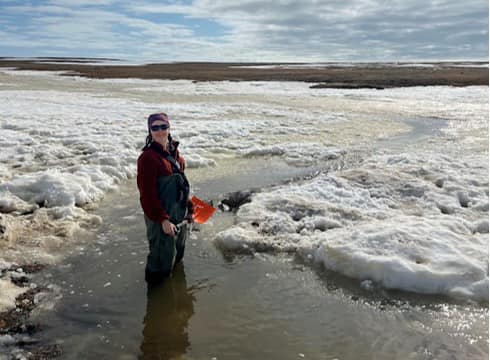I got the chance to spend a month this summer at Cape Bounty (www.capebountyresearch.com; www.facebook.com/CBAWO) ahead of starting my Master’s. My field research combines measurements of carbon fluxes in streams and from terrestrial environments in wet sedge watersheds. Ultimately, my goal is to understand how much carbon is leaving these watersheds, in what forms, and how much is released to the atmosphere as greenhouse gases.
The hydrology portion of my fieldwork started when we first arrived in early June, when the landscape was still covered in snow. We first had to dig our stream sampling sites out of several feet of snow to make sure we were ready to go once the snow began to melt and the streams began to flow. Over the next weeks, we returned to the same sites every day to collect water samples that will be analyzed in the lab to find out how much carbon is in the water and in what forms. I also set up greenhouse gas measurement sites throughout the watersheds. These wet-sedge environments are fascinating to observe and work in because of all the small differences in topography and how much they seem to control the soil moisture and vegetation type.
This being my first time in the Arctic, the thing that struck me the most was how quickly the whole landscape changed and evolved over the short time I was there! To watch it go from fully snow-covered to wet and muddy to almost completely dry in just a few weeks, with all the accompanying changes in vegetation, was truly special.
I look forward to analyzing the preliminary data I collected this summer and preparing for another successful field season next year!

Clara is co-supervised by Melissa Lafreniere and Neal Scott. The field research is funded by the generous support of the Polar Continental Shelf Program, NSERC Northern Supplement (Lafreniere) and NSERC Discovery Grants to Lafreniere and Scott./p>
 Department of Geography and Planning
Department of Geography and Planning